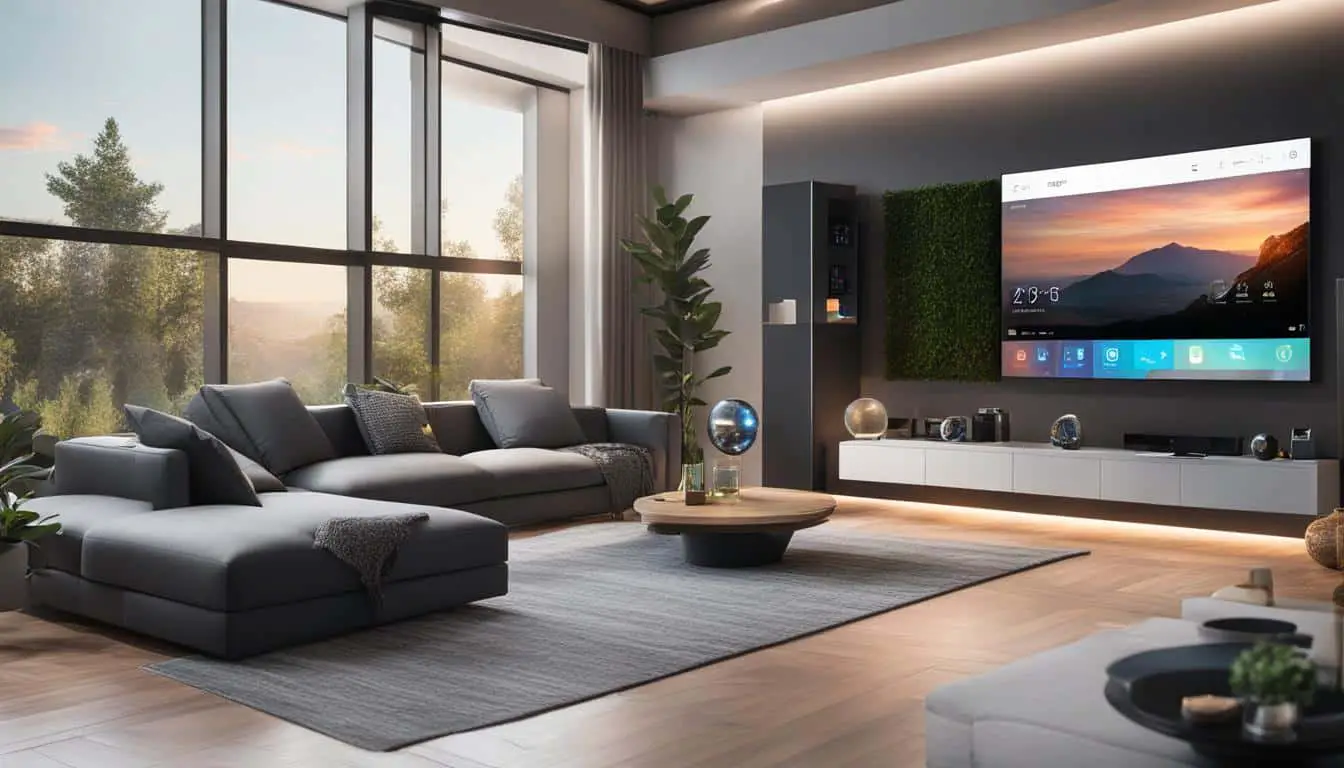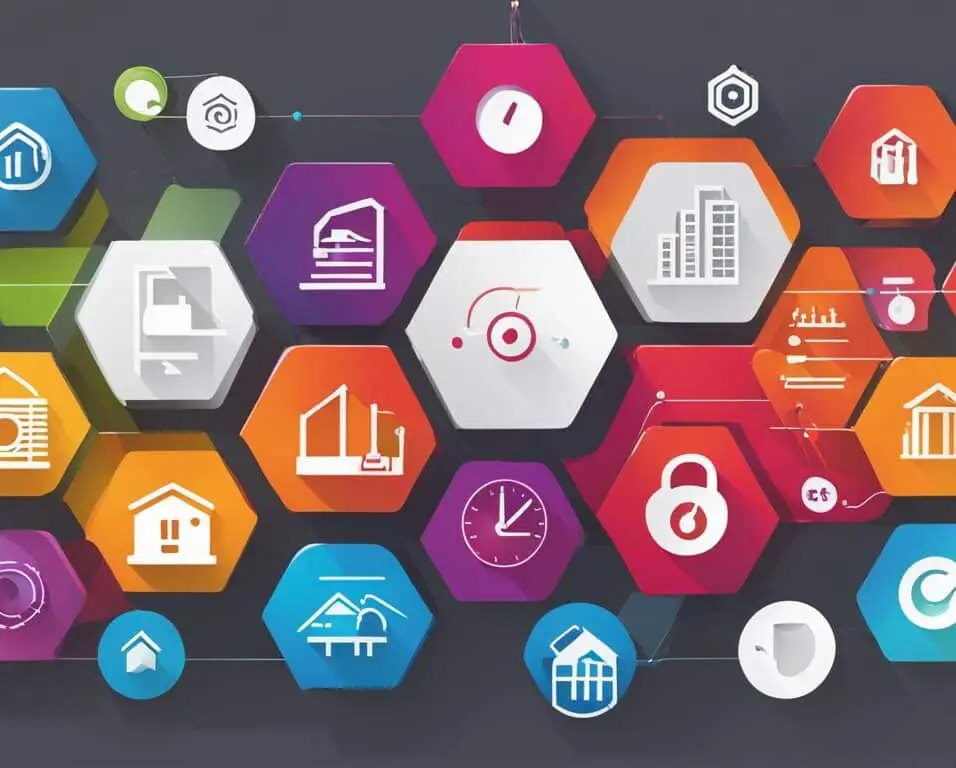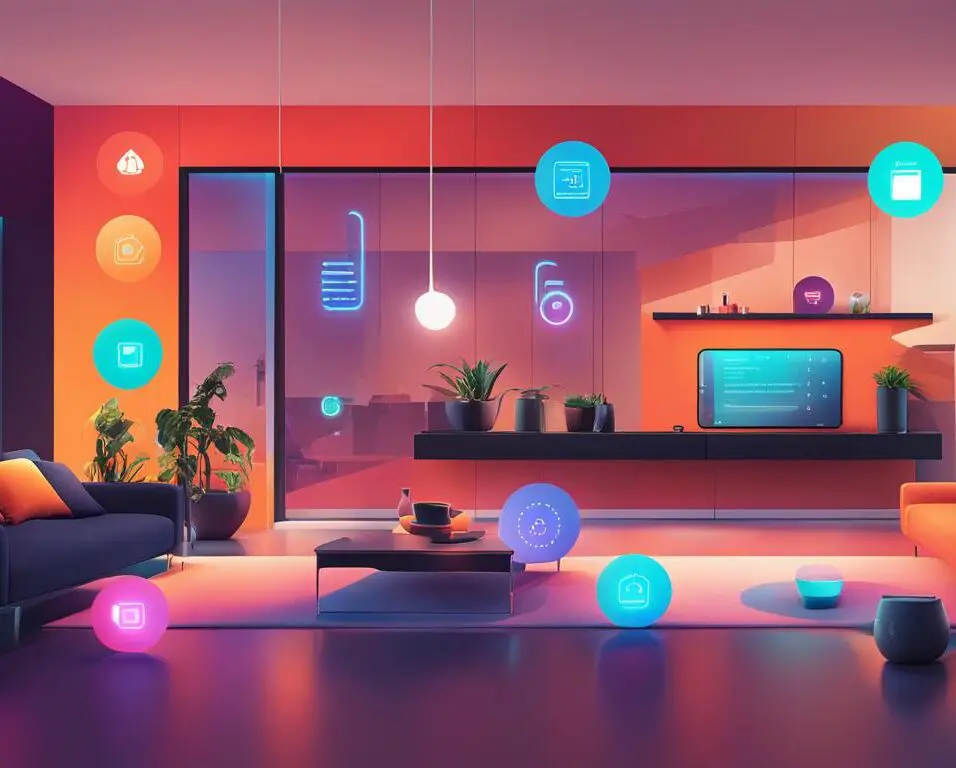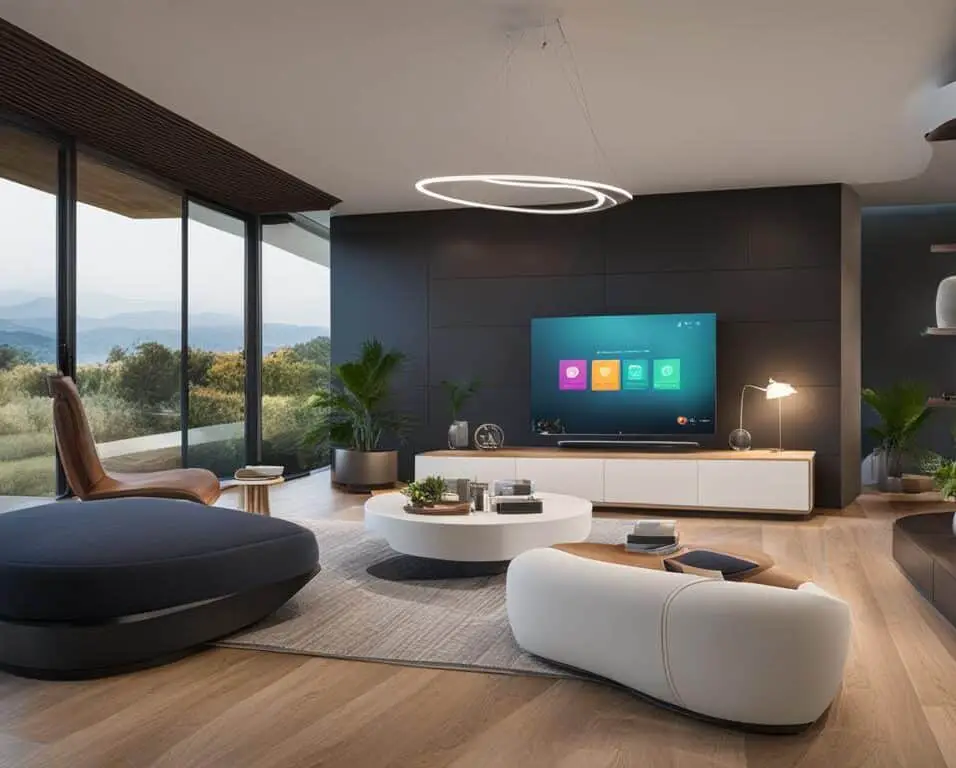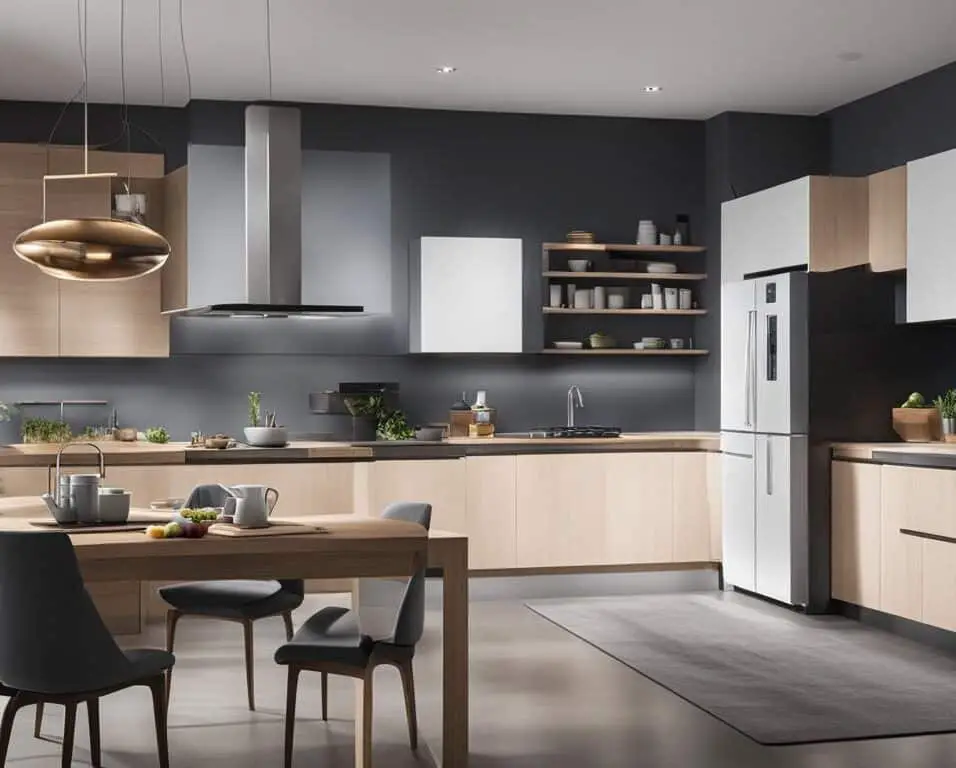The Future of Home Automation with IoT: Integrating IoT Devices for Efficient Smart Home Solutions
The rapid advancements in technology have revolutionized the way we live, and one area that has benefited greatly is home automation. With the integration of IoT devices, smart homes have become more efficient, convenient, and secure than ever before.
The Internet of Things (IoT) has brought a new level of connectivity to our homes, allowing us to control and monitor various appliances and systems remotely. Whether it’s adjusting the temperature, locking the doors, or turning on the lights, IoT devices enable us to manage our homes effortlessly.
Smart home solutions powered by IoT devices offer a wide range of benefits. They not only enhance convenience and comfort but also improve energy efficiency, making our homes more sustainable. Additionally, these technologies provide personalized experiences tailored to our preferences, creating a truly smart and intuitive living environment.
As the field of IoT devices continues to expand, the future of home automation looks promising. From AI-driven systems that learn and adapt to our habits to robotics that assist with everyday tasks, smart homes are becoming an integral part of our lives.
In this article, we will explore the evolution of smart home systems, emerging trends and innovations, the impact of technologies like Matter, and the future of smart homes in the next decade.
Key Takeaways:
- IoT devices have transformed home automation, enabling remote control and monitoring of various systems and appliances.
- Smart home solutions offer convenience, energy efficiency, and personalized experiences tailored to individual preferences.
- The integration of technologies like AI, robotics, and Matter is driving the evolution of smart homes.
- Future smart homes will feature AI-driven systems, robotics, and advanced health applications.
- Challenges such as cybersecurity and data privacy need to be addressed for a safe and secure smart home environment.
Evolution of Smart Home Systems
The integration of the Internet of Things (IoT) has propelled the evolution of Smart Home Systems (SHS) to new heights. With seamless connectivity between home appliances and users, IoT-based SHS has gained immense popularity, enabling remote monitoring and control from anywhere. This integration has transformed the way we interact with our homes and has paved the way for personalized, efficient, and secure smart home experiences.
The typical structure of a Smart Home System comprises three essential phases: data collection, data processing, and service delivery. These phases work cohesively to ensure a smooth and effective functioning of the smart home.
Data collection: In this phase, sensors and devices capture various data points within the home environment, such as temperature, occupancy, energy usage, and security status. This data collection provides valuable insights that enable smart home functionalities and automation.
Data processing: Once the data is collected, it undergoes processing to derive meaningful information and actionable patterns. This processing involves analyzing and interpreting the collected data using advanced algorithms and machine learning techniques.
Service delivery: The processed data is then utilized to deliver personalized services and automate various tasks within the smart home. This phase encompasses functions like adjusting temperature settings, activating security systems, controlling lighting, and managing energy consumption.
Various technological approaches drive the evolution of SHSs, with each approach bringing its unique strengths and capabilities. Some of the key technological approaches in SHS development include Wireless Sensor Networks (WSN), Multi-Agent Systems (MAS), Internet Protocol (IP), IoT integration, Artificial Intelligence (AI), and Machine Learning (ML).
The combination of these approaches enables the integration of smart devices, seamless connectivity, and efficient communication within the SHS ecosystem. By leveraging data collection, data processing, and service delivery, SHSs can provide personalized experiences tailored to individual needs, enhance energy efficiency, improve security, and simplify daily tasks.
| Technological Approaches | Description |
|---|---|
| Wireless Sensor Networks (WSN) | Enables the deployment of interconnected sensors throughout the smart home to collect data and enable automated responses. |
| Multi-Agent Systems (MAS) | Facilitates intelligent decision-making and collaboration among multiple entities within the smart home system, improving efficiency and adaptability. |
| Internet Protocol (IP) | Provides a standardized framework for the transmission and communication of data between devices in the smart home network. |
| Internet of Things (IoT) Integration | Enables seamless connectivity and data exchange between devices, allowing for remote monitoring and control of the smart home system. |
| Artificial Intelligence (AI) | Empowers smart homes with the ability to learn user preferences, automate tasks, and provide personalized experiences based on data analysis. |
| Machine Learning (ML) | Utilizes algorithms and statistical models to enable smart homes to improve their performance and adapt to changing user needs over time. |
The constant evolution of smart home systems driven by these technological approaches promises to reshape the way we live in our homes. As advancements continue, smart homes will become even more intelligent, seamlessly integrating with our daily lives to provide comfort, convenience, and security.
Smart Home Trends and Tech Innovations
The smart home industry is experiencing a rapid evolution, driven by innovative trends and technologies that enhance automation and convenience. From smart home connectivity to personalized health management, these advancements are transforming the way we live. Let’s explore some of the top smart home trends and tech innovations that are shaping the future.
1. Smart Home Connectivity
In today’s interconnected world, smart home connectivity is at the forefront. With seamless integration between devices, homeowners can control and monitor their homes remotely. From adjusting the thermostat to turning off lights, the possibilities are endless. This connectivity also provides enhanced security features, with smart locks and surveillance systems offering peace of mind.
2. Personalized Health Management
Smart homes are revolutionizing health management by offering personalized solutions. With devices that track vital signs, monitor sleep patterns, and remind users to take medication, individuals can take proactive steps towards their well-being. These technologies not only promote healthier lifestyles but also enable early detection of potential health issues.
3. Intelligent Energy Management
Energy conservation is a key focus in smart homes. Through intelligent energy management systems, homeowners can optimize their energy consumption, reduce waste, and lower utility bills. Smart thermostats, automated lighting, and energy-efficient appliances all contribute to a sustainable home environment.
4. Sustainable Home Solutions
With increasing concerns about the environment, sustainable home solutions are gaining momentum. Smart homes incorporate features like solar panels, rainwater harvesting systems, and smart irrigation, promoting eco-friendly living. These technologies not only reduce the carbon footprint but also offer long-term cost savings.
5. Home Robotics
Robots are becoming an integral part of smart homes, assisting homeowners with various tasks. From cleaning floors to delivering packages, robots make daily chores more convenient and efficient. With advancements in artificial intelligence, these robots can adapt to the changing needs of residents, enhancing their quality of life.
6. Next-Generation Entertainment
Smart homes are revolutionizing the entertainment experience. Cutting-edge audio and visual technologies, such as virtual reality and immersive sound systems, provide a truly immersive entertainment experience. With voice-activated controls and seamless connectivity, homeowners can enjoy their favorite movies, music, and games like never before.
These smart home trends and tech innovations are just a glimpse into the future of home automation. As startups drive innovation in the industry, we can expect even more exciting advancements in the years to come. Embracing these technologies not only improves our daily lives but also contributes to a more sustainable and connected world.

Matter is Revolutionizing Smart Home Systems
Matter, an open-sourced communication protocol, is transforming the landscape of smart home systems. With the backing of over 200 companies, including industry giants like Amazon, Apple, Google, and Samsung, Matter aims to revolutionize smart home connectivity and establish a unified connectivity standard. This standardized protocol leverages existing technologies such as Thread, Wi-Fi, Bluetooth, and Ethernet to enable devices to communicate locally without relying on a cloud.
By utilizing Matter, smart home devices from different manufacturers can seamlessly work together, offering users a simplified setup process and local control even when the internet connection is down. Gone are the days of compatibility issues and complex configurations. Matter provides a seamless and functional smart home experience by offering a unified and standardized communication protocol that encourages innovation and interoperability between devices.
With Matter, users can enjoy the benefits of a truly interconnected smart home, where devices can communicate effectively and effortlessly. Whether it’s controlling the thermostat, managing security cameras, or automating household tasks, Matter-enabled devices ensure a cohesive and streamlined smart home experience.
The convenience and efficiency offered by Matter’s unified connectivity standard are unparalleled. This protocol removes the barriers between devices, allowing users to tap into the full potential of their smart home ecosystem. Regardless of the device brand or type, Matter ensures that everything works harmoniously, delivering a seamless and enjoyable smart home experience.
The Future of Smart Home Connectivity
Matter’s unified connectivity standard sets the stage for the future of smart home systems. With increased interoperability, users can expect a broader range of smart home devices to choose from, eliminating the limitations of brand-specific ecosystems. This standardization encourages healthy competition and innovation amongst device manufacturers, driving the development of new and improved smart home technologies.
Matter leverages existing technologies to enable devices to communicate locally without relying on a cloud, offering a simplified setup process and local control even if the internet is down.
As the smart home industry continues to grow, Matter’s unified connectivity standard ensures a seamless and cohesive experience for users. Whether it’s integrating new devices into an existing system or expanding a smart home ecosystem, Matter simplifies the setup process and enhances interoperability. This standardization not only benefits consumers but also fosters collaboration and compatibility across the entire smart home industry.
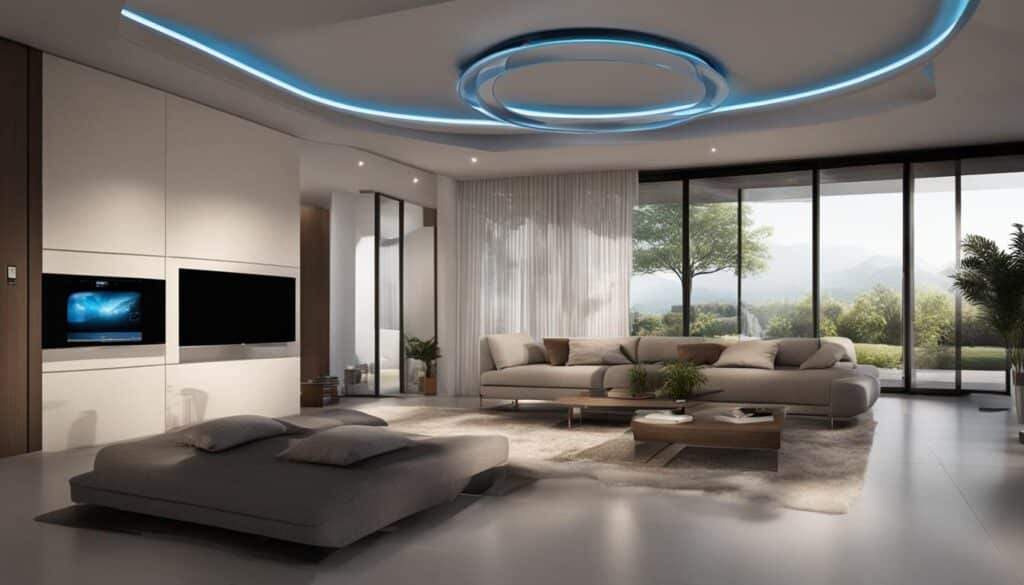
The image above visually represents the revolutionizing impact of Matter on smart home systems. With unified connectivity, smart homes become more intelligent and user-friendly, connecting devices from various manufacturers and providing a seamless experience for users.
With Matter leading the way, the possibilities for smart home connectivity are endless. From enhanced automation and control to improved energy efficiency and personalized experiences, Matter’s unified connectivity standard paves the way for a future where smart homes seamlessly integrate into our daily lives.
What Will Smart Homes Look Like in 10 Years?
Smart homes are on the brink of a remarkable transformation in the next decade, fueled by constant advancements in Artificial Intelligence (AI) and cutting-edge technologies. These innovations will enable smart homes to adapt and cater to users’ preferences, creating personalized experiences that seamlessly integrate various gadgets.
In the future, robots will become indispensable members of households, taking charge of various tasks such as cleaning, maintenance, and even offering personalized assistance to homeowners. With their AI capabilities, these robots will possess the ability to learn and adapt, providing efficient and customized support.
Health-related applications will also witness significant growth, as smart homes embrace the integration of sensors and cameras to monitor residents’ health and well-being. From tracking vital signs to analyzing sleep patterns, smart homes will provide a comprehensive solution to manage and improve personal wellness.
“Advancements in AI will enable smart homes to adapt to users’ preferences, coordinating various gadgets to create personalized experiences.”
However, amid the promising future of smart homes, privacy and cybersecurity concerns take center stage. As more devices become connected, safeguarding personal data becomes increasingly critical. To address this, government regulations are emerging to ensure the safety of connected devices and protect users’ information.
In order to preserve privacy, robust security measures will be imperative in smart homes. Encrypted communication channels and authentication protocols will play a vital role in preventing unauthorized access and data breaches.
Illustration of the future smart home:
As depicted in the image, the future smart home will feature a seamless integration of AI, robotics, and health applications, offering personalized experiences and enhanced convenience. Privacy concerns will be addressed through advanced security measures, ensuring that personal data remains secure within the smart home ecosystem.
Big Data, Artificial Intelligence, and Other Advanced Tech in IoT Home Automation
IoT home automation leverages cutting-edge technologies to enhance automation, security, and create a comfortable and personalized living environment.
In today’s interconnected world, big data analysis plays a vital role in smart home systems. The massive amount of data generated by IoT devices can be analyzed to derive valuable insights. This data-driven approach allows homeowners to make informed decisions, optimize energy usage, and enhance overall efficiency.
Artificial intelligence (AI) is at the core of smart homes, acting as the hidden “brains” that learns from residents’ habits and behavior patterns. By understanding individual preferences, AI-powered smart homes can anticipate needs, adjust settings, and provide a seamless and personalized experience.
Edge computing and fog computing are revolutionizing the way smart homes function. By processing data locally, closer to IoT devices, latency is reduced, and real-time responsiveness is improved. Edge computing also enhances security by minimizing the reliance on cloud-based services.
Advancements in Computer Vision
Computer vision technology is enabling advanced security solutions within smart homes. Through facial recognition algorithms, smart cameras can identify and recognize individuals, enhancing home security. With people detection algorithms, smart homes can detect unauthorized entry and raise alerts, ensuring a safe living environment. Fall detection algorithms help monitor the well-being of elderly residents, allowing for immediate assistance in case of emergencies.
Voice Recognition and Hands-Free Control
Smart home devices incorporate voice recognition technology, allowing homeowners to control various aspects of their homes simply by talking to them. Voice commands can be used to adjust lighting, temperature, and entertainment systems, providing a convenient hands-free experience. Voice assistants such as Amazon Alexa, Google Assistant, and Apple Siri have become an integral part of IoT home automation, enhancing user accessibility and convenience.
AR/VR for Visual Overlays and Virtual Redecoration
Augmented reality (AR) and virtual reality (VR) technologies bring exciting possibilities to smart homes. AR/VR applications can overlay information and visuals, providing real-time feedback and enhancing the user experience. Users can virtually explore different interior design options before redecorating their homes, eliminating the need for physical prototypes and minimizing costs.
IoT home automation empowers homeowners to create integrated and intelligent living spaces that enhance comfort, convenience, and security.
As technology continues to advance, IoT home automation will play an increasingly significant role in our lives. The integration of big data, artificial intelligence, computer vision, voice recognition, and AR/VR technologies will transform the way we interact with our homes, making them smarter, more efficient, and ultimately improving our quality of life.
Increased Adoption and Challenges in the Smart Home Industry
The smart home industry is witnessing a significant increase in adoption as more and more consumers recognize the benefits of automation and convenience. The integration of IoT devices and advanced technologies has revolutionized the way we live, offering seamless control of various aspects of our homes.
However, with this rapid growth comes challenges, particularly in the areas of cybersecurity and data privacy. With every device connected to the Internet, there is a potential target for hackers. Therefore, ensuring robust security measures is crucial to protect the privacy and sensitive information of homeowners.
As a response to the growing concerns, government regulations are emerging to set minimum security requirements for connected devices. These regulations aim to establish a framework for ensuring the safety and integrity of smart home systems, instilling consumer confidence in the industry.
Another challenge lies in privacy concerns. Smart homes collect and analyze vast amounts of personal data, raising questions about how this data is used and protected. Homeowners are increasingly cautious about sharing their personal information and expect transparency from smart home service providers.
Despite these challenges, the adoption of smart home technology continues to grow. The convenience, energy efficiency, and improved quality of life offered by smart homes make them an essential part of modern living. The industry is projected to flourish as technology advances and addresses the existing challenges.
The Future of Smart Home Adoption
The future of smart home adoption looks promising, with forecasts suggesting a substantial increase in the number of households embracing smart home technology. Continued advancements in IoT devices, artificial intelligence, and machine learning will drive the development of more intelligent and intuitive systems. This, coupled with enhanced security measures and improved data privacy regulations, will contribute to the widespread adoption of smart homes.
By incorporating innovative technologies and addressing challenges in the industry, we are moving towards a future where smart homes seamlessly integrate into our daily lives, providing personalized and secure living environments.
It is essential for key stakeholders in the smart home industry to collaborate and invest in the development of advanced security measures and robust privacy policies. By prioritizing cybersecurity and data privacy, industry players can build trust, encourage adoption, and unlock the full potential of smart home technology.
As the smart home industry evolves, it is crucial for homeowners, manufacturers, and regulatory bodies to work together to ensure the security and privacy of individuals and their homes. With the right precautions and a strong commitment to innovation, the smart home industry will continue to thrive, providing us with a future where our homes truly become intelligent and interconnected ecosystems.
Conclusion
The integration of IoT devices for efficient smart home solutions promises unparalleled convenience and efficiency in home automation. With advancements in IoT technology, artificial intelligence, robotics, and advanced tech, smart homes are rapidly evolving. The future of smart homes looks promising, offering personalized experiences, improved health management, and enhanced security.
However, to fully embrace the potential of smart homes, it is essential to address challenges such as cybersecurity and data privacy. As technology continues to advance, ensuring a safe and secure smart home environment becomes paramount. Industry players and policymakers must prioritize robust security measures and establish regulations to protect consumers.
Despite these challenges, smart homes are becoming an essential part of our daily lives, transforming the way we live and interact with our living spaces. As we witness further innovation in IoT devices and home automation solutions, the benefits of a smart home will continue to grow, providing us with a more convenient, comfortable, and connected living experience.
FAQ
What are the benefits of integrating IoT devices in smart home solutions?
Integrating IoT devices in smart home solutions offers unparalleled convenience and efficiency in home automation. It allows for seamless connectivity and control of home appliances and systems, enabling remote monitoring and personalized experiences.
How does the evolution of smart home systems work?
Smart home systems have evolved over the years with the integration of IoT technology. They follow a three-phase structure, which includes data collection, data processing, and service delivery. Different technological approaches such as WSN, MAS, IP, IoT, AI, and ML drive the evolution of smart home systems, enabling personalized, efficient, and secure smart home experiences.
What are some of the top smart home trends and tech innovations?
The smart home industry is experiencing various trends and tech innovations, including smart home connectivity, personalized health management, intelligent energy management, sustainable home solutions, and advanced lighting. These trends are driven by startups that are continuously driving innovation in the smart home landscape.
How does Matter revolutionize smart home systems?
Matter is an open-sourced communication protocol supported by over 200 companies in the industry. It aims to simplify the smart home landscape by offering a standardized communication protocol that enables devices from different manufacturers to seamlessly work together. With Matter, users can benefit from simplified setup processes, local control even without internet access, and enhanced interoperability among smart home devices.
What can we expect from smart homes in the next 10 years?
Smart homes are set for a significant transformation in the coming decade. Advancements in artificial intelligence (AI) will enable smart homes to adapt to users’ preferences, coordinating various gadgets to create personalized experiences. Robots will play an active role in household tasks, and health-related applications will drive smart home growth. However, privacy and cybersecurity concerns will remain important, and measures will be taken to protect personal data and ensure the safety of connected devices.
What advanced technologies are used in IoT home automation?
IoT home automation relies on various advanced technologies, such as big data analysis, artificial intelligence, edge and fog computing, computer vision, voice recognition, and augmented reality/virtual reality (AR/VR). These technologies improve automation, security, and create a comfortable and personalized living environment for users.
What are the challenges facing the smart home industry?
While smart home adoption is increasing, challenges remain in the areas of cybersecurity and data privacy. Every device connected to the internet is a potential target for hackers, making robust security measures crucial. Government regulations are emerging to set minimum security requirements for connected devices. Privacy concerns arise as smart homes collect and analyze personal data. However, despite these challenges, the smart home industry is projected to continue growing as technology advances.
What is the conclusion about smart homes and IoT devices?
Smart homes and IoT devices are transforming the way we live, offering convenience, efficiency, and personalized experiences. With the integration of advanced technologies, smart homes are becoming an essential part of daily life. However, it is important to address challenges such as cybersecurity and data privacy to ensure a safe and secure smart home environment.



